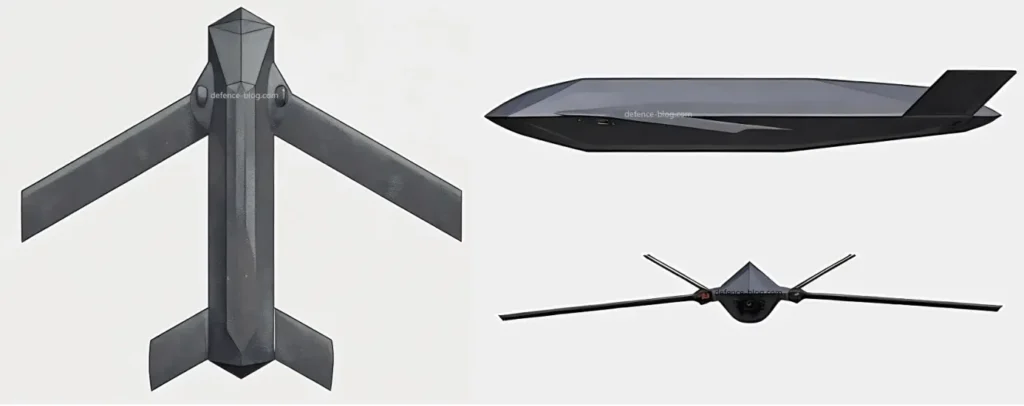Follow Us:
Share
Table of Contents:
Russia’s drone technology is taking another leap forward with the reported development of a new, sophisticated drone system by the United Aircraft Corporation, a key subsidiary of Rostec. This innovative platform, often referred to as the “Unmanned Transport Module” or “Su-71K” in some media outlets, introduces a groundbreaking concept in unmanned aerial combat and marks a significant addition to Russia’s growing arsenal of advanced aerial technology.

Intended for launch from Russia’s premier fifth-generation stealth fighter, the Su-57 Felon, this drone is designed to deliver powerful strike capabilities while leveraging high-end artificial intelligence and neural networks to function autonomously in complex combat environments.
The Unmanned Transport Module: Drone or Missile?
The Unmanned Transport Module’s design blurs the traditional lines between drones and guided missiles, offering unique features that integrate the functionality of both. Official sources describe it as an air-launched unmanned aerial vehicle (UAV) capable of attacking both stationary and mobile targets, even in environments with significant countermeasures.
What stands out is the system’s reliance on advanced target recognition and decision-making technologies, driven by artificial intelligence, which allows it to operate with minimal human oversight. This places it among the most autonomous UAV platforms in development, capable of conducting missions with unprecedented levels of flexibility and precision.
With its sleek, stealth-inspired appearance, the Unmanned Transport Module has a fuselage that includes a warhead and sophisticated optical and navigation sensors, creating a powerful tool for long-range precision strikes.

The drone features a swept-wing design, twin-fin all-moving tail, and an intelligent onboard search and guidance system that enhances its agility and targeting accuracy. These design elements are intended to maximize survivability, reduce detection, and maintain mission effectiveness, especially in contested airspace.
An Advanced Air-Launched Weapon
In keeping with its advanced role, the Unmanned Transport Module is specifically engineered to be launched from the Su-57 Felon, Russia’s top-of-the-line stealth fighter. This setup introduces a level of versatility that few drone systems currently possess.
Not only can it be operated remotely from the ground, but it also has the option for control by the Su-57 pilot. This dual-control approach adds significant adaptability, as it allows for mission re-tasking mid-flight, based on real-time intelligence and evolving battlefield conditions.

Reports suggest that the Unmanned Transport Module’s development has been influenced heavily by Russia’s recent combat operations, including lessons learned from its ongoing involvement in Ukraine.
The significant losses sustained by Russian forces and the challenges faced in complex, high-stakes aerial operations have underscored the need for more resilient, flexible platforms. These combat experiences appear to have informed the design of the Unmanned Transport Module, emphasizing adaptability, rapid response, and durability in contested environments.
Advanced Communication and Control Capabilities
Beyond its physical design, the Unmanned Transport Module stands out for its sophisticated communication systems, which support multiple channels for mission guidance. This feature allows for flexible control options, enabling operators to adjust mission parameters mid-flight, whether from the Su-57 or a ground-based control center. This multi-channel setup offers several tactical advantages, including the ability to respond to new intelligence in real-time and adjust targeting or flight paths to avoid emerging threats.
In essence, the Unmanned Transport Module functions as a “smart” cruise missile, equipped with remote guidance systems that make it adaptable to a variety of battlefield scenarios. With this approach, the platform combines the stealth and precision of a cruise missile with the flexibility and adaptability of a UAV, creating a hybrid weapon system that can be deployed across a range of combat situations.
To date, three prototypes of the Unmanned Transport Module have reportedly been constructed and tested at Russia’s Akhtubinsk Air Base, a significant site for aviation testing and development. These prototypes represent an essential phase in validating the platform’s capabilities, refining its design, and testing its performance in a controlled environment before entering broader production and operational deployment.
Share
Defense Feeds
Defense Feeds is publication focusing on informing, engaging, and empowering the world by providing accurate information from defense technology.
Powered by Defense Feeds © 2025 – All rights reserved.




